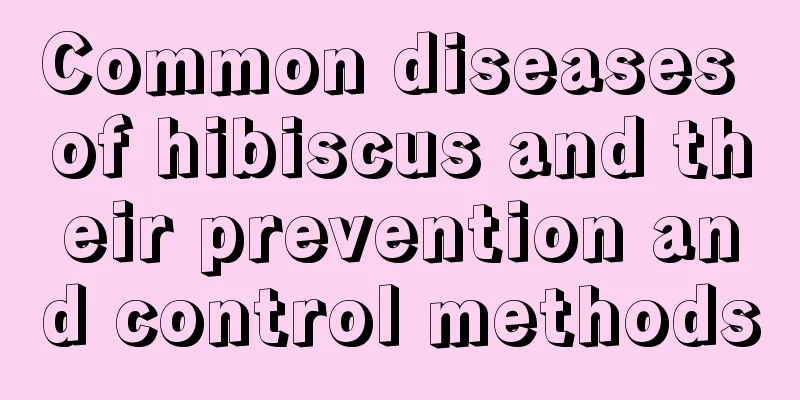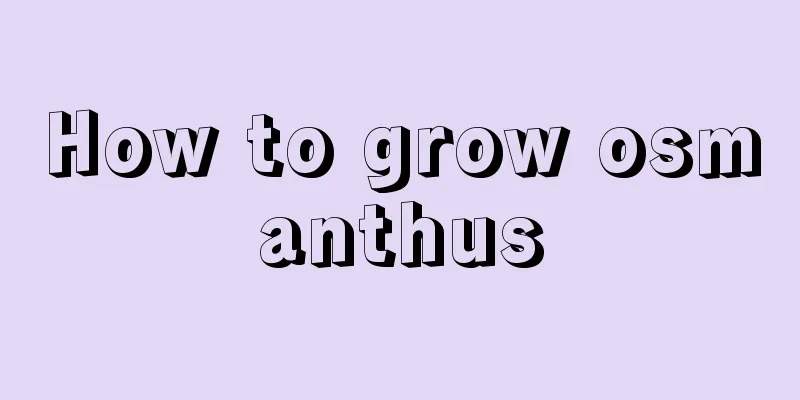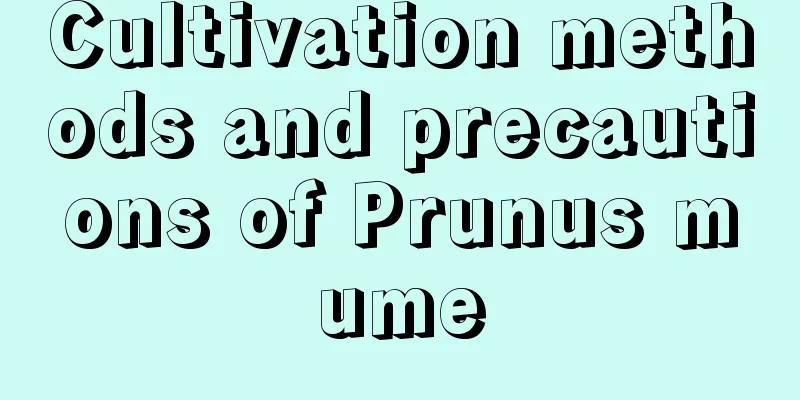Common diseases of hibiscus and their prevention and control methods

Hibiscus leaf spotHibiscus leaf spot is a fungal disease. It often occurs when the weather turns cold in late autumn, especially in northern regions. The initial symptom is the appearance of light yellow and reddish-yellow spots on the leaves. As the spots expand, they become round or oval in shape. Under relatively humid conditions, black granular substances may appear on the spots. Later, the leaves dry up and fall off. Prevention and control methods: The key to prevention and control of this disease is to do a good job of cold prevention and take protective measures when strong winds and temperatures drop in autumn. Hibiscus stem rotHibiscus stem rot is a serious and widespread fungal disease. The disease often occurs in the rainy season and is more severe under high temperature and heavy rain conditions. The initial symptoms are not very obvious. The cortex of the affected part will only shrink and appear dark brown, but the subcutaneous tissue has already begun to rot and turn brown. After the lesions circle the stem, the plant withers and dies. The leaves will also have corresponding symptoms. In the early stage of the disease, the leaves will wilt, and yellow-brown spots will appear on the edges, gradually expanding inward. In the later stage, the leaves will dry up and fall off. Prevention and control methods: The key to prevention and control of this disease is to prevent heavy rain from eroding the plants for a long time, and to apply 200-500 times diluted thiophanate to the stems every 10 days or so before and after the rainy season. Hibiscus AnthracnoseThe disease occurs on the leaves. The lesions are nearly circular or irregularly circular, often occurring on the edges of leaves. They are dark brown spots at first, and then become wider and dark red in the edges as they expand. The center is grayish white with small black dots scattered on it. The disease is serious during the rainy season. Prevention and treatment methods: ① Eliminate pathogens. During the disease process, dead and diseased branches should be removed in time and burned in a concentrated manner to reduce the source of the disease. ② Rationally apply the three elements of nitrogen, phosphorus and potassium (never apply only nitrogen fertilizer) to promote the healthy growth of plants and improve disease resistance.
|
<<: Plumeria disease and insect pest control methods
>>: Common diseases of osmanthus
Recommend
Diseases and prevention methods of Molan
Sclerotium rotum symptom People also call it fung...
How to sow the seeds of Schima superba
Start time Sowing is more convenient, so it is be...
Can osmanthus trees be pruned? The three best time periods for pruning osmanthus trees
Osmanthus trees can be pruned . There are three m...
How many kilograms of lily are usually produced per mu? What is the output value and profit per mu of planting?
Lily yield per mu Usually, the yield per mu of ed...
Pests of air plants and their control methods
Air pineapple pests - scale insects Scale insects...
How to propagate lily bulbs and what to pay attention to
Lily bulb propagation method There are many ways ...
Cultivation methods and precautions of He's Impatiens
1. Temperature It likes to grow in a warm and coo...
How many days is the growth cycle of long beans?
Long beans , also known as cowpeas, are a common ...
What is the difference between the dragon god tree and the celestial ruler?
The difference between the dragon god wood and th...
What to do if gardenia leaves have black spots
1. Disease problem (1) Solution: This is the most...
What to do if the leaves of Clivia are too long
1. Why are the leaves too long? First of all, the...
How to care for hydroponic sweet potatoes
Sweet potato hydroponic method When growing sweet...
How to grow cedar well
Cedar Growing Conditions Cedar prefers a mild and...
How much water should I use for a bonsai tree?
1. How much water to pour The demand for water fo...
What should I do if Frost Dynasty grows too long?
The reason for the growth of Frost Dynasty Excess...









